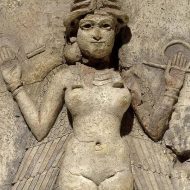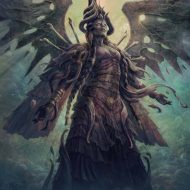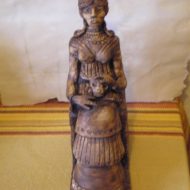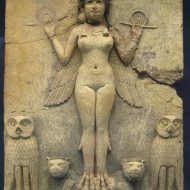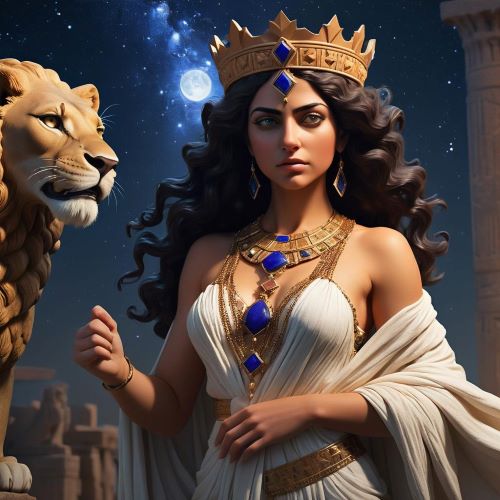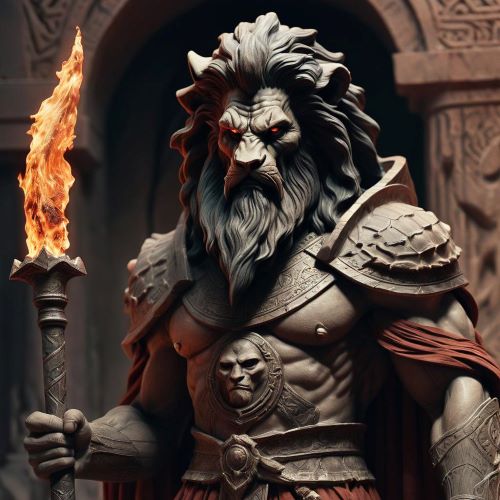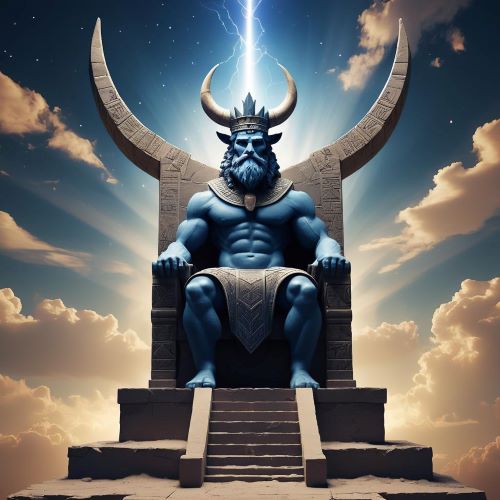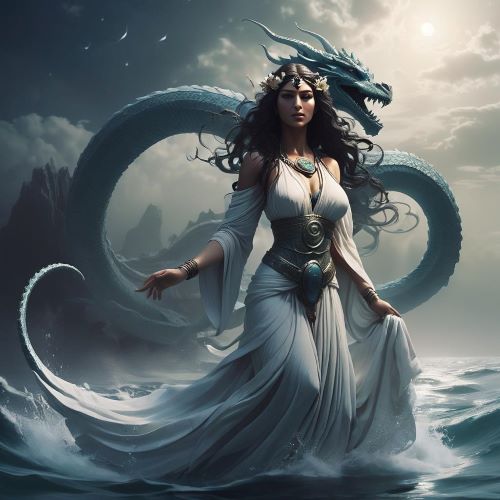Ereshkigal : The Underworld Goddess
Listen
At a glance
| Description | |
|---|---|
| Origin | Sumerian Mythology |
| Classification | Gods |
| Family Members | Nanna (Father), Ningal (Mother), Innana (Sister), Gugalana, Enlil, Nergal (Husbands), Ninazu, Namtar (Sons), Manungal (Daughter) |
| Region | Iraq |
| Associated With | Underworld, Afterlife, Death Rituals |
Ereshkigal
Introduction
Ereshkigal was the goddess of the underworld in Mesopotamian mythology. She was regarded as the queen of the Great Earth, and she was one of the many deities that ruled the underworld in the region. Her main temple was in Kutha, which was once a part of Nergal’s empire but her cult had a limited scope. The two main myths about her are the tale of Inanna falling into the underworld and her marriage to Nergal. Other myths also refer to her as a son of various gods, such as Ninazu and Ningishzida.
The story of Ishtar’s descent dates back to ancient Mesopotamia and is written in cunniform, the ancient script of the Summerians. It is believed that it symbolized the seasons and the development of rituals and doctrines related to the afterlife. This is also intended to illustrate the various rituals and doctrines that were commonly practiced in the temple-schools of the region.
Ereshkigal and her various demonic creatures were believed to have been the inspiration for some of the Greek myths, such as the stories of the Persephone and Hades. The Sheol concept in Judasiam was also closely related to the mythology of the underworld in Mesopotamia. However, since the monotheistic tradition prevented the goddess from being able to rule the underworld, Sheol was not able to include her.
Physical Traits
There is currently no known iconography for Ereshkigal. The Burney Relief, which dates back to the reign of Hammurabi in 1792-1750 BCE, is commonly regarded as depicting her. It features a naked woman with pointed wings and standing on two lions with owls on either side of her. Ereshkigal is depicted with various symbols of power, such as lions and mountains. Scholars believe that this could also be images honoring Inanna or Lilith. Ereshkigal was the most feared deity in the Mesopotamian pantheon because she represented one’s final destination from which there was no returning.
In Mesopotamia, it was believed that creating an image of someone or something that could be used to attract the attention of the subject was a tradition. Statues of the gods and portraits of people’s cylinder seals were also believed to have amuletic properties. However, if a statue of Ereshkigal was made, it would have probably directed the attention of the queen of the dead to whoever was making it.
Family
It is unclear who her parents were in the Mesopotamian pantheon, as some texts refer to this goddess as the daughter of An, the supreme sky god in Mesopotamian religion. In contrast, other records list the queen of the underworld as the daughter of Nanna, the god of the moon, and Ningal, the goddess of the reeds. Erishkigal is the older sister of Inanna, and she is best known for her role in The Descent of Inanna, which was written in the Sumerian language.
Her first husband was Gugalana, who was known as the Great Bull of Heaven who was killed by Enkidu in The Epic of Gilgamesh. With him she bore the son Ninazu. Her second husband was the god Enlil, and he had a son named Namtar. Her third husband was also a god, and she had a daughter named Manungal, who was an underworld deity who was known for her healing and retribution powers along with a penchant for punishment of the wicked. Her fourth consort was Nergal, who was the only spouse who agreed to remain with her in the underworld.
Other Names
Ereshkigal is also referred to as Irkalla and Allatu in various documents. There has also been references to a few minor goddesses who have similarities to the main goddess but experts are still divided on this.
Powers and Abilities
As the queen of Kur, the Summerian underworld, Ereshkigal was focused on looking after the souls of the dead and preventing them from interacting with the living. The rituals and ceremonies that she performed were related to the end of people’s lives. As the goddess of the underworld, Ereshkigal was tasked with ensuring that the dead were properly buried and that their annual rituals were conducted properly. This aspect of her role had been so important that she would often go rogue and allow the dead to visit her living companions as ghosts. She would also reprimand those who did not conduct proper death rituals.
Modern Day Influence
Ereshkigal has been the focal point for many scholars and academics who are trying to find a connection between the Mesepotamian civilization and other neighbouring civilizations like the Greek and Roman Mythology and in turn, find a viable link to Egyptian mythology. The world of the dead, its associated rituals and the position of the deity in the pantheon could hold clues to these links.
Related Images
Frequently Asked Questions
What is lorem Ipsum?
I am text block. Click edit button to change this text. Lorem ipsum dolor sit amet, consectetur adipiscing elit. Ut elit tellus, luctus nec ullamcorper mattis, pulvinar dapibus leo.
What is lorem Ipsum?
I am text block. Click edit button to change this text. Lorem ipsum dolor sit amet, consectetur adipiscing elit. Ut elit tellus, luctus nec ullamcorper mattis, pulvinar dapibus leo.
What is lorem Ipsum?
I am text block. Click edit button to change this text. Lorem ipsum dolor sit amet, consectetur adipiscing elit. Ut elit tellus, luctus nec ullamcorper mattis, pulvinar dapibus leo.
What is lorem Ipsum?
I am text block. Click edit button to change this text. Lorem ipsum dolor sit amet, consectetur adipiscing elit. Ut elit tellus, luctus nec ullamcorper mattis, pulvinar dapibus leo.
What is lorem Ipsum?
I am text block. Click edit button to change this text. Lorem ipsum dolor sit amet, consectetur adipiscing elit. Ut elit tellus, luctus nec ullamcorper mattis, pulvinar dapibus leo.

